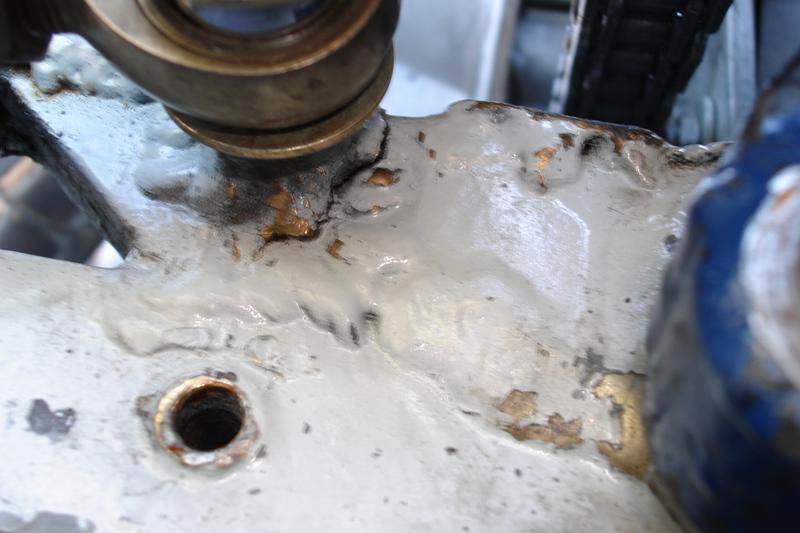Bummer, might be worth checking the others as well, JIC.
So, what is the yellow car in the background of the second photo?

We found a small crack around the rear control arm mount. It needs to be fixed.

We removed the fiberglass body so we could get a better look at the whole chassis.

A better ramp solution has the rear door jacked up even farther.

Some scrap pieces of wood and a bungie cord keep our ramps in place.
The square, steel-tube portions of the LeGrand are joined together by brazing in many spots. This is an accepted method of joining pieces of chromoly tubing and minimizes localized heating. It keeps the chromoly steel from becoming brittle around the welded areas.
Pete, dad of GRM Tech Editor Per, attended the Gulfcoast Autocrossers practice event in Ft. Myers with the car. After a few runs, he noticed a small crack near one of the suspension mounts. The car was immediately loaded back on the trailer and taken back to his shop. The body was removed, and now we’re in the process of cleaning up the surrounding area for a better look.
As we described in a recent installment, we created a temporary ramp to safely get our LeGrand onto our trailer. Pete recently worked out a better ramp solution that uses a taller blocking system under the ramp door. He also made a cubbyhole where the ramps can be stored during transit.
Bummer, might be worth checking the others as well, JIC.
So, what is the yellow car in the background of the second photo?
Tub looks good. Those welds around the lower trailing arm mounting points are notorious apparently. Hope to see pics of how you end up doing the job. What IS that cool yellow thing in the garage!
That's my dad's GTM, it's a mid-engined fiberglass car made in the UK using a Honda B16. It makes an Elise look fat.
TIG weld it. Standard high quality E70S-2 filler rod will flow right into the weld happily, and it'll most likely be quite a bit stronger than a rebrazed joint. You don't need to heat-treat it or anything either, since the HAZ on a tig weld is really tight.
That looks like a repair braze . It is also a poor attempt at a repair . The brazing is "cold" and didn't flow out properly . The crack may just be the braze itself and not the underlying metal . You will have to gring off the surrounding braze and check the steel structure . If that looks OK, the rebraze with some quality brazing rod . Yes, it costs more but its cheap considering the consequences for that joint . If the steel is indeed cracked, then you will need to fabricate a doubler plate and braze that around the joint to provide the load bearing strength to an underdesigned joint .
You cannot TIG with a steel rod for this joint as the brazing material will contaminate the weld and you will make a true mess of the joint . Also, heat treating has nothing to do with the HAZ . Heat treating is to change the mechanical properties of the base metal by a controlled thermal processes . It will treat the whole structure and not just the joint . You also cannot heat treat any brazed structure as the lowest heat treating process will melt the braze and then you have no structure !
Displaying 1-8 of 8 commentsView all comments on the GRM forums
You'll need to log in to post.